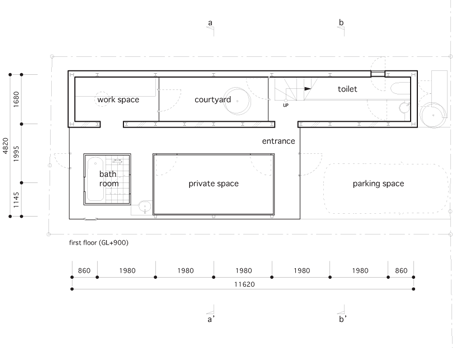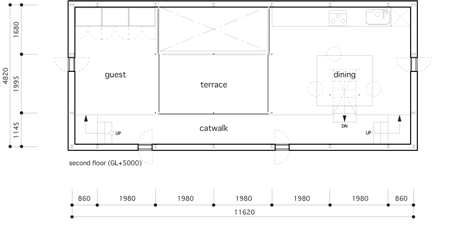Curving concrete creates a tunnel through Tokyo house by Makiko Tsukada
A concrete tunnel slices through the base of this Tokyo house by Japanese architect Makiko Tsukada, creating a round hole in the facade that reveals the underside of a staircase (+ slideshow).
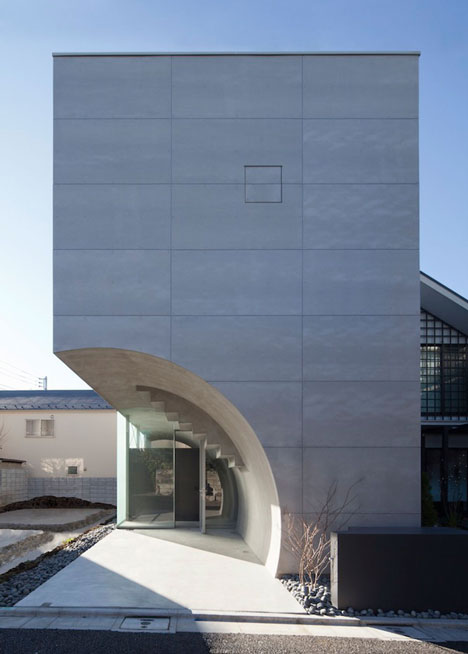
Makiko Tsukada designed Tunnel House for a site facing a T-junction, so her concept was to produce a form that appears as a continuation of the road. The result is a curving container that cuts through the entire ground floor.
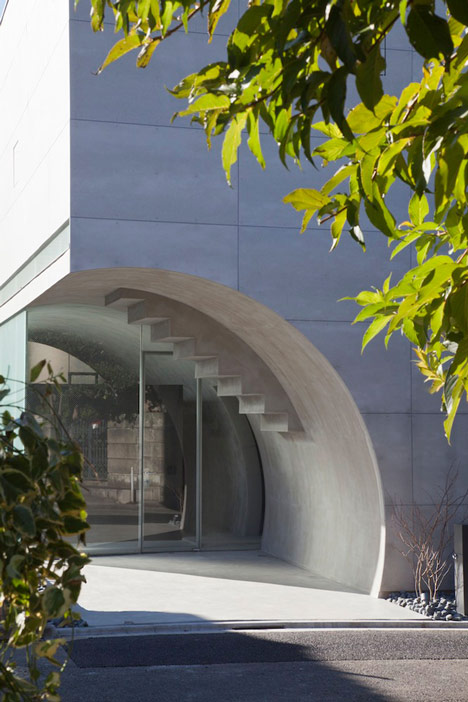
"Our design intention is to provide a visual extension of the street on the site so that it creates a virtual crossroads," said Tsukada.

The rest of the house is planned around the tunnel, creating a series of unusual features that include a floating steel floor, a dining table beneath a staircase, a triple-height courtyard and a bedroom without a ceiling.
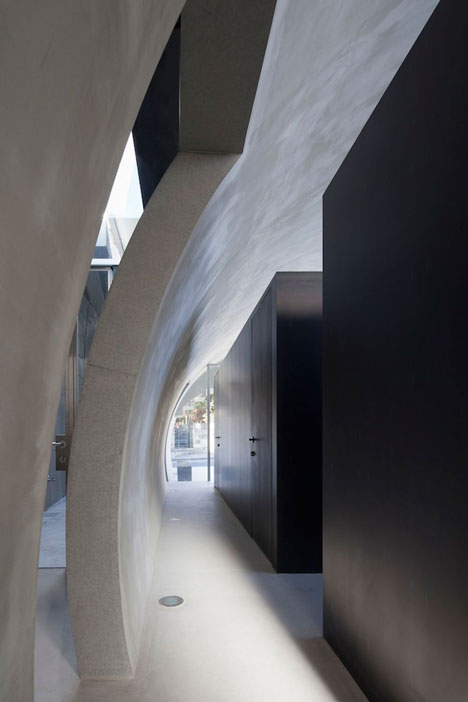
The architect categorises these spaces as uchi, which means "in the tunnel", and soto, which means "out of the tunnel".
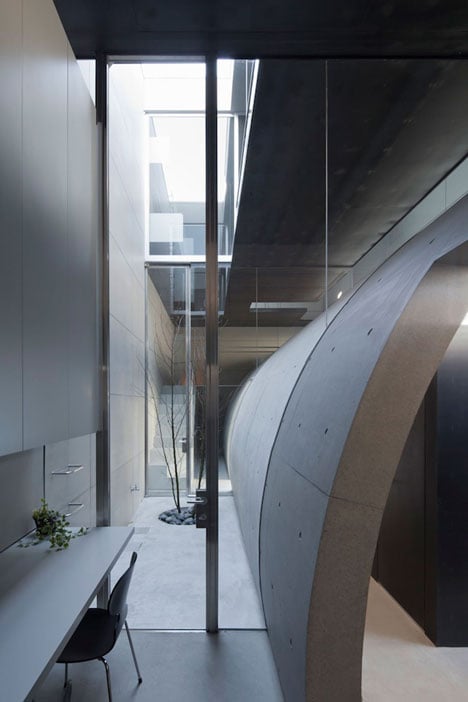
"One of the visitors' comments was that 'tunnel-uchi' and 'tunnel-soto' betray one's sense of space, as one feels like being outside while actually being inside the house," she explained.
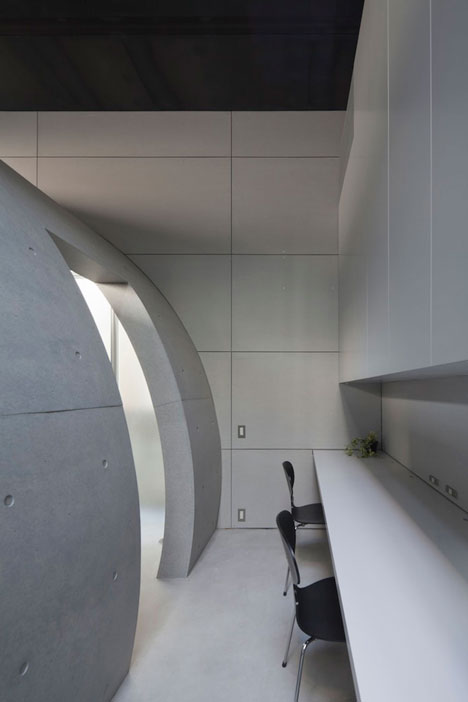
A glazed wall exposes the full outline of the tunnel from the house's entrance. Inside, the structure is revealed to be wrapping around a pair of lidless boxes that contain the main bedroom and bathroom.
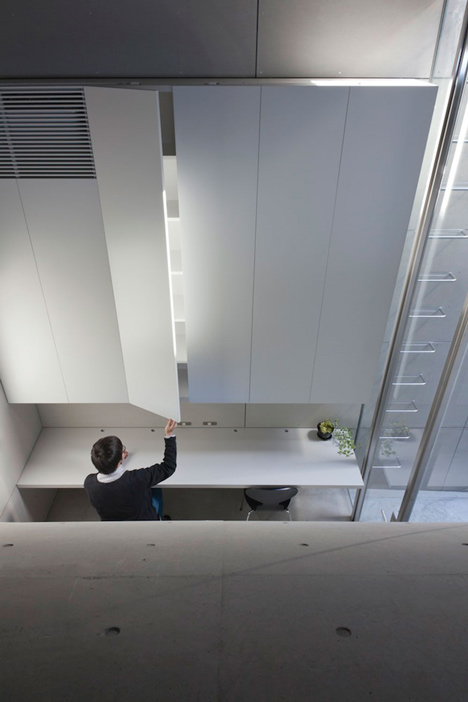
"From the bedroom box, one can see the view of the entire 'tunnel-uchi' space as if seeing an exterior view from a rooftop," said Tsukada.
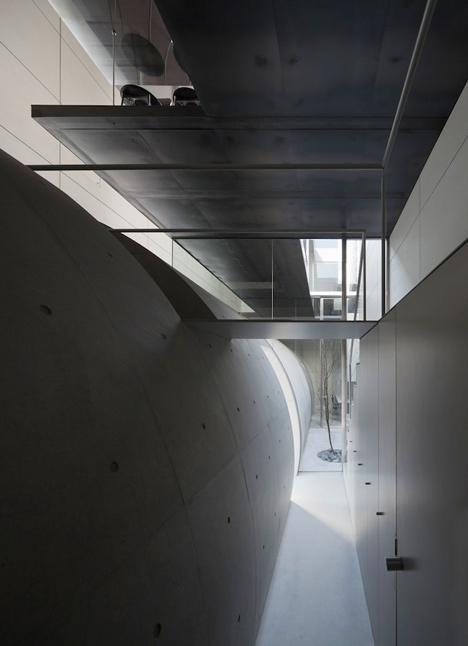
Two double-height spaces behind the curving concrete accommodate a small study and a toilet. Glass doors lead out from spaces into the simple courtyard, which is sandwiched in between.
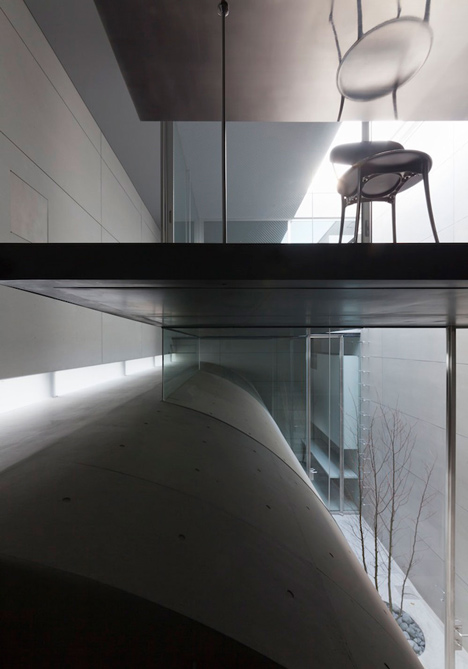
A staircase leads up onto the top of the tunnel, which doubles as a mezzanine walkway. Residents can then access a guest bedroom and dining room, located on the suspended steel floor that provides the uppermost storey.
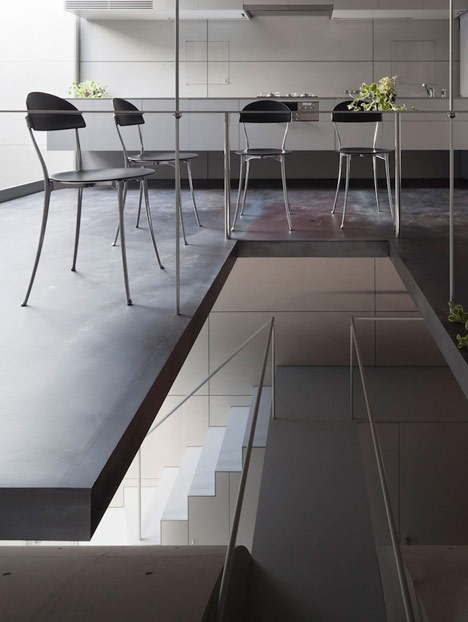
The dining table sits over the stairwell and has a mirrored underside that creates upside-down reflections.
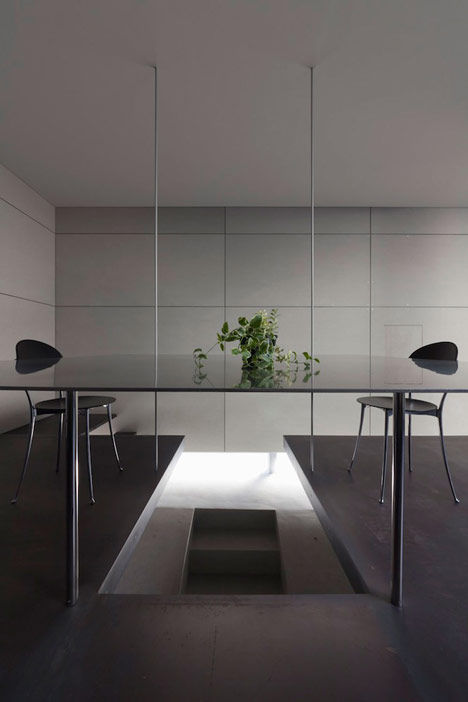
Photography is by Shinkenchiku-sha.
Read on for a project description from Makiko Tsukada:
Tunnel House
The site is at the end of a T-junction. Our design intention is to provide a visual extension of the street on the site so that it creates a virtual cross road. The interior space and the exterior space are connected by carving out a part of the volume along the extended axis of the street. The tunnel-like configuration is intended to activate both "uchi" (in the tunnel) and "soto" (out of the tunnel) spaces.
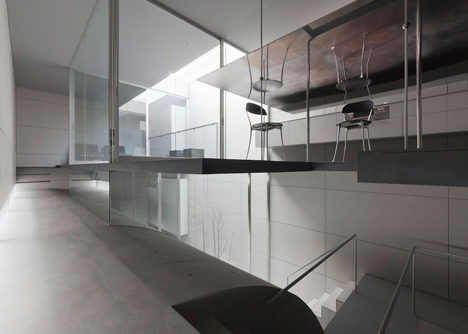
The open side of the quarter cylinder is enclosed by glass. The "tunnel-uchi" comprises two small boxes containing a bedroom and a bathroom respectively. The bedroom is enclosed by screen-like partitions and its ceiling is open. From the bedroom box, one can see the view of the entire "tunnel-uchi" space from there as if seeing an exterior view from a rooftop.
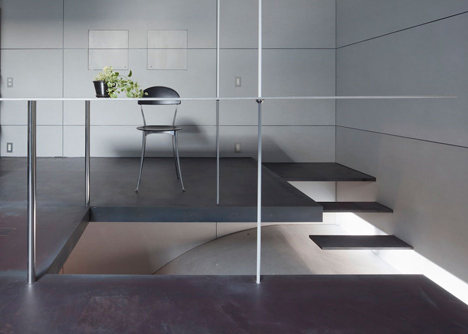
The opening at the side of the tunnel is connected to the "tunnel-soto" space. "Tunnel-soto" space is an interior space where the light that is cascading down along the tunnel surface from the oblong top light and the light coming down from the courtyard intersect each other three-dimensionally.
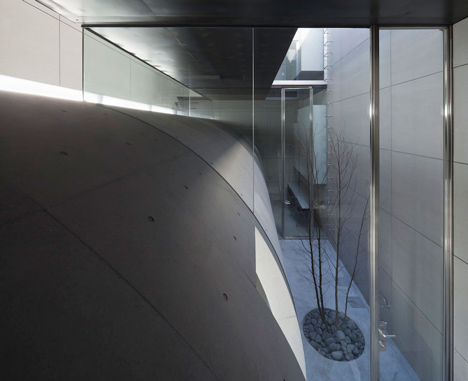
When going up the stairs, one can see the entire "tunnel-soto" space. From the gap of the floating steel floor, one can see the reflected image of "tunnel-soto" space on the mirrored surface on the rear side of the tabletop on the second floor. The floating steel floor and the super-thin 6mm thick table give the space a surreal atmosphere of floating and expansion, while creating a sharp contrast with the immense volume of the tunnel.
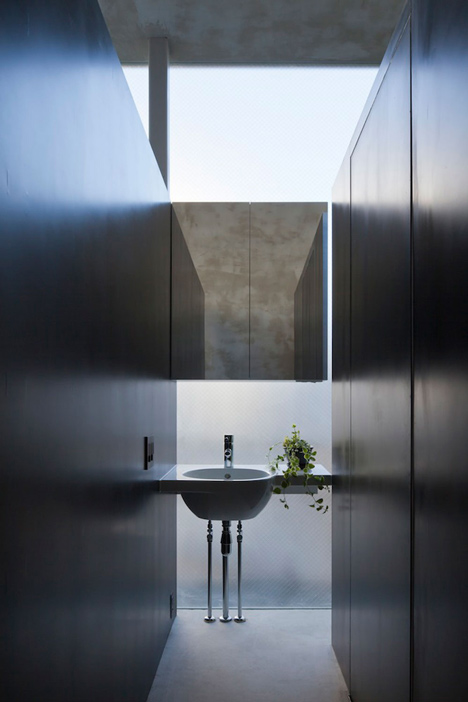
One of the visitors' comments was that "tunnel-uchi" space and "tunnel-soto" spaces betray one's sense of space, as one feels like being outside while actually being inside the house. By experiencing repeated reversals of the interior and the exterior spaces (betrayed feelings), one probably can feel a sense of expansion and openness in this tunnel house.
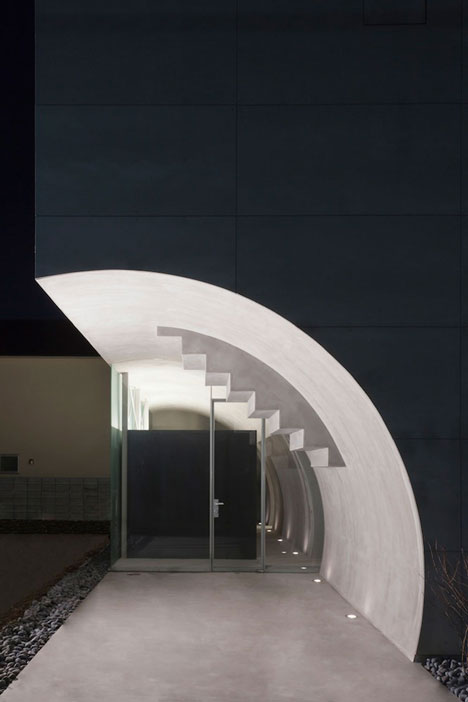
Location: Suginami-ku, Tokyo
Structure: Reinforced Concrete and Steel
Principal Use: Residence, Office
Site Area: 82.39m2
Total Floor Area: 87.17m2 (43.65m2/1F, 43.52m2/2F)
Structural Engineer: Taizen Nieda and Taizo Komatsu
